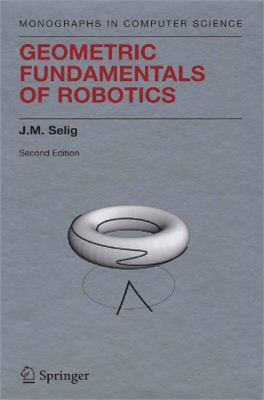Springer (Monographs in Computer Science); 2nd edition 398 pages.
Geometric Fundamentals of Robotics provides an elegant introduction
to the geometric concepts that are important to applications in
robotics. This second edition is still unique in providing a deep
understanding of the subject: rather than focusing on computational
results in kinematics and robotics, it includes significant
state-of-the art material that reflects important advances in the
field, connecting robotics back to mathematical fundamentals in
group theory and geometry.
Key features:
* Begins with a brief survey of basic notions in algebraic and differential geometry, Lie groups and Lie algebras
* Examines how, in a new chapter, Clifford algebra is relevant to robot kinematics and Euclidean geometry in 3D
* Introduces mathematical concepts and methods using examples from robotics
* Solves substantial problems in the design and control of robots via new methods
* Provides solutions to well-known enumerative problems in robot kinematics using intersection theory on the group of rigid body motions
* Extends dynamics, in another new chapter, to robots with end-effector constraints, which lead to equations of motion for parallel manipulators
Geometric Fundamentals of Robotics serves a wide audience of graduate students as well as researchers in a variety of areas, notably mechanical engineering, computer science, and applied mathematics. It is also an invaluable reference text.
Key features:
* Begins with a brief survey of basic notions in algebraic and differential geometry, Lie groups and Lie algebras
* Examines how, in a new chapter, Clifford algebra is relevant to robot kinematics and Euclidean geometry in 3D
* Introduces mathematical concepts and methods using examples from robotics
* Solves substantial problems in the design and control of robots via new methods
* Provides solutions to well-known enumerative problems in robot kinematics using intersection theory on the group of rigid body motions
* Extends dynamics, in another new chapter, to robots with end-effector constraints, which lead to equations of motion for parallel manipulators
Geometric Fundamentals of Robotics serves a wide audience of graduate students as well as researchers in a variety of areas, notably mechanical engineering, computer science, and applied mathematics. It is also an invaluable reference text.

